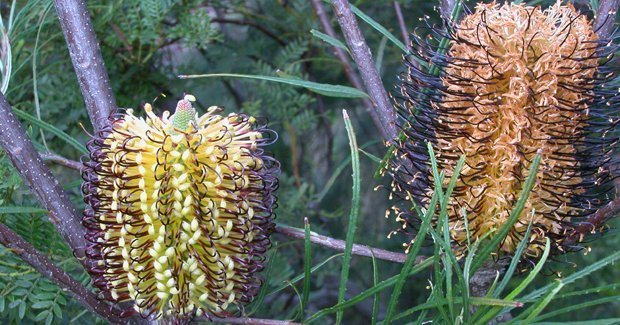Ice age led to mass extinction of Aussie plants

A SERIES OF ICE AGES wiped out a great diversity of plantlife in Australia’s south-east, new research has revealed.
About 1.5 million years ago, central Victoria enjoyed high summer rainfall, and was home to vast temperate rainforests, similar to those further north in New South Wales and Queensland today. New research now shows the region had a spectacularly diverse sclerophyll flora – tough-leaved, woody plants – such as eucalypts, acacias and banksias.
“The richness…was equivalent to the richness of sclerophyll vegetation found today in south-west Western Australia, and in the Cape region of South Africa, ” which are some of the most diverse communities of plants on the planet, says study co-author Dr Kale Sniderman, of the University of Melbourne.
Ice Age to blame for loss of biodiversity
The findings are published this week in the US journal, the Proceedings of the National Academy of Sciences, and indicate that over the past million years, as Australia’s climate underwent a series of ice ages and became drier and more variable, many plants were wiped out.
“Our results were quite unexpected,” says Kale, adding that the region had Australia’s “most diverse floras outside of the tropics”.
He and his research partner Dr Greg Jordan, from the University of Tasmania, extracted fossil leaves from 1.5 million-year-old sediments at the bottom of a lake near Daylesford, Victoria. Here they found 69 now extinct sclerophyll species, but computer models suggest the diversity could have been much higher.
Kale and Greg believe rapid climatic changes, which occurred as a result of successive ice ages, are responsible for Victoria’s biodiversity loss. “The plant diversity of eastern Australia today is but a shadow of its diversity prior to the ice ages,” Greg told Australian Geographic.
Why did Victoria lose its plant life?
“When climate shifts from ice age to interglacial, or vice versa, the species may be confronted suddenly by a very different environment,” Kale explains. When faced with climate shifts, species can either tolerate the change, adapt to the new conditions, or migrate.
“Species that don’t do one or another of these things will be driven to extinction,” says Greg.
Dr Matt McGlone, of Landcare Research in New Zealand, says this study shows a clever way to use fossils to understand changes in climate and vegetation over time. “It is hard to over-estimate the impact this paper will have in plant biogeographical circles,” he says.
The research might also help experts understand how plants will react to climate change.
“South-eastern Australian sclerophyll plants have already tolerated 1 million years of relatively large climate changes,” says Kale. “South-western Australian plants are more diverse for the very reason that they have been sheltered from major climate changes, but they may be sensitive to future changes.”
RELATED STORIES

